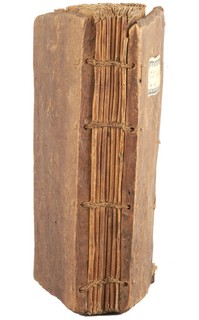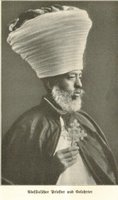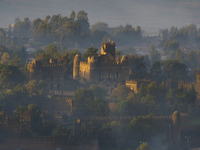
This is a book with many purposes. Beyond accounting the history and principles of Ethiopic, this book challenges the accepted institutionalized theory that South Arabia is the origin of Ethiopic.
My favorite parts of the book was first, the strongly defended theory about the origin of the fisted right hand black power symbol; second, the explanation of the beginnings of b'al and the usage of grass during coffee ceremony; and thirdly, the study of Ethiopic as a pictographic form. There was a lot more to the book; for instance, the numeric system and its relation to the mystery of why God said that Abraham's name must be Abraham and not Abram ("Abraham corresponds to the sum total (numerical values of 60 (40+9+6+1+4), which when divided by 5 the total number of [Ge'ez] characters in the name reveals the 12 House of Israelites"). Also, the writing systems connection to astronomy and the calendar (there are 182 syllographs, which equals the total number of days in half a year or in one equinox). Oh, and the fact that animal skin was used for writing material because of the abundance of livestock in northern Ethiopia. Actually, animal skin is still used today - a friend of mine recently returned from Ethiopia with a large piece of cow skin, dried and then, partly shaved to be covered with a story from the Bible.

But back to my favorite parts of the book:
 Ayele Bekerie poses the question "What is the relationship between the African American or South African 'Black Power' salute and the ideographic character (Yä) Yäman, literally a [Ethiopic] term for a fisted right hand?
Ayele Bekerie poses the question "What is the relationship between the African American or South African 'Black Power' salute and the ideographic character (Yä) Yäman, literally a [Ethiopic] term for a fisted right hand? Another interesting point: Dr. Ayele links the use of grass (qétäma) to a 1700 BC script on a sandstone sphinx. On the sphinx is inscribed the term "B'alat" in the Proto-Sinaitic script (throughout the book he shows the close relationship between Ethiopic and Sinaitic writing). B'alat was the word for gods or goddesses of fire or sun. Quoted from Porphyry de Abstinentia, "Who inhabit the most sacred region made by the Nile, began first, from the vestal hearth, to sacrifice to the celestial gods, not myrrh, or cassia, or the first fruit of things...but grass, which, as a certain soft wool of prolific nature, they plucked with their hands."
For years, in Ethiopia B'al, a Ge'ez and Amharic term for holidays associated with "abundance, festivity, and wealth," is celebrated by decorating the floor with grass (qétäma).
The final point I must highlight: Ethiopic writing system has a pictographic foundation similar to the Ancient Egyptian hieroglyphics. Dr. Ayele examines the Proto-Sinaitic pictographic scripts and its "direct relationship" to the Proto-Ethiopic script.
It excites my nerves to know that their is a great probability that such an intelligent writing design existed in sub-Sahara Africa 2000 years BC. Dr. Ayele's work challenges Ethiopianist and Africanist to do more extensive and fair archaeological work on the continent of Africa below the Sahara Desert.










